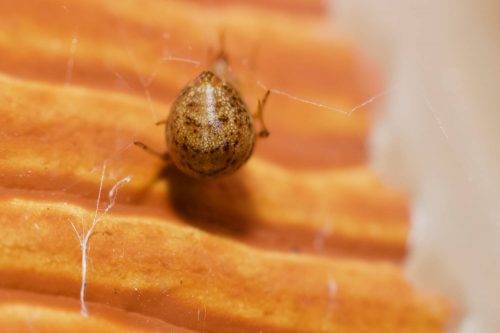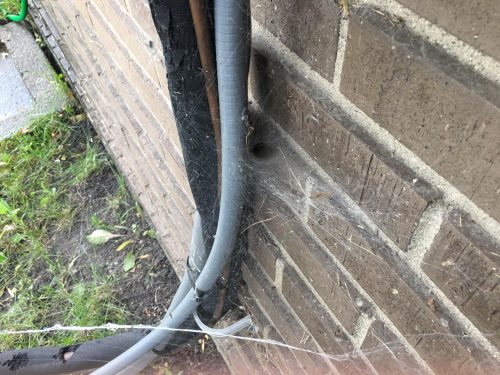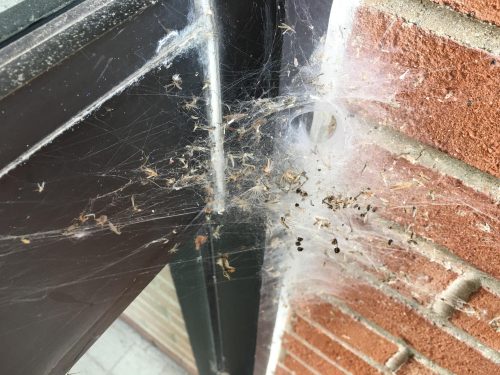Spider taxonomy drives me cross-eyed. Today I was working on sorting egg sacs, tearing them away from their mommies, who don’t like that one bit — they’re very protective. I’m learning to tell the different species apart without a microscope. For instance, Steatoda triangulosa has a distinctive zig-zag of pigment on their abdomen that looks like a row of triangles from above, and they also have nearly spherical egg sacs that are white, have a fluffy surface, and are often semi-transparent. Parasteatoda, on the other hand, has an irregular mottling that sometimes looks roughly stripey, and their egg sacs are football-shaped, beige, and have an opaque leathery/papery surface (there are two species of Parasteatoda around here, P. tepidariorum and P. tabulata, which I haven’t learned to distinguish — it requires careful scrutiny of their genitalia — and my live spiders refuse to sit still long enough to poke around their private parts). Those are my rules, they’re what helps me figure out who is what.
So today I’m parting Lyanna from her egg sac…here’s Lyanna:










